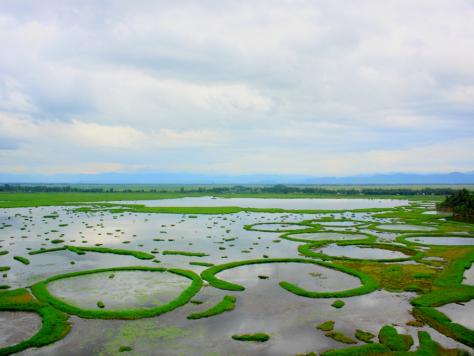Lohtak Lake
Nambol, Manipur, India, Asia

Customized Activity
You are free to customize your itinerary exactly the way you want. Choose transport, hotel & sightseeing as per your desires.
Includes
Meals
Transport
Pick-up & Drop
Activities
Accomodation
About The Attraction
The largest freshwater (sweet) lake in North -East India, also called the only Floating lake in the world due to the floating phumdis (heterogeneous mass of vegetation, soil, and organic matters at various stages of decomposition) on it, is located near Moirang in Manipur state, India. The etymology of Loktak is Lok = "stream" and tak = "the end". The Keibul Lamjao National Park, which is the last natural refuge of the endangered sangai or Manipur brow-antlered deer (Cervus eldi eldi), one of three subspecies of Eld's Deer, covering an area of 40 km2 (15 sq mi), is situated in the southeastern shores of this lake and is the largest of all the phumdis in the lake.
This ancient lake plays an important role in the economy of Manipur. It serves as a source of water for hydropower generation, irrigation and drinking water supply. The lake is also a source of livelihood for the rural fisherman who live in the surrounding areas and on phumdis, also known as “phumshongs”. Human activity has led to severe pressure on the lake ecosystem. 55 rural and urban hamlets around the lake have a population of about 100,000 people. Considering the ecological status and its biodiversity values, the lake was initially designated as a wetland of international importance under the Ramsar Convention on March 23, 1990.[1] It was also listed under the Montreux Record on June 16, 1993, "a record of Ramsar sites where changes in ecological character have occurred, are occurring or are likely to occur".
A rich biodiversity with habitat heterogeneity has been recorded during a scientific survey carried out between January 2000 and December 2002 in different habitat patches of the lake. The lake’s rich biological diversity comprises 233 species of aquatic macrophytes of emergent, submergent, free-floating and rooted floating leaf types. But in the declining trend of vegetation, the important flora recorded are as under.
The important vegetation of the phumdis recorded are Eichhornia crassipes, Phragmites karka, Oryza sativa, Zizania latifolia, Cynodon spp., Limnophila spp., Sagittaria spp., Saccharum latifolium, Erianthus pucerus, Erianthus ravennae, Leersia hexandra, Carex spp.; Phragmites karka is reported to be the dominant species.In the habitat patch with rooted floating plants, vegetation comprises the a) Nelumbo nucifera, b) Trapa natans, c) Euryale ferox, d) Nymphaea alba, e) N. nouchali, N. stellata and f) Nymphoides indica.
Fauna
57 species of waterbirds and another 14 species of wetland associatedbirds have been noted in the lake including 28 species of migratory waterfowl (most migrating from different parts of the northern hemisphere beyond the Himalayas). Also recorded were 425 species of animals—249 vertebrates and 176 invertebrates). The list includes rare animals such as the Indian python, sambhar and barking deer. Keibul Lamjao National Park is the natural habitat of one of the most endangered deer, the Brow-antlered deer (Cervus eldi eldi) which was once thought to be extinct, which was declared a national park only to preserve and conserve this species of Eld's Deer.
Aqua fauna
Fish yield from the lake is reported to be about 1,500 tonnes (6,600,000 lb) every year. The State Fishery Department has introduced millions of fingerlings of Indian and exotic major carps. Natural capture fishery without the requirement of any lease or licence was also in vogue in the lake. The lake fishery is now a mixture of capture and culture systems. Nine mini-hatcheries opened by the State Government has the capacity to produce one million fish fingerlings in a day. Fifty percent of the fingerlings produced were released into the Loktak Lake and the balance were distributed to beneficiary fishing committees. The new fish varieties introduced in lake were grass carp, silver carp and the old varieties of the local fishes like Channa punctatus (ngamu), Anabas testudineus (ukabi), Anguilla (ngaril), pangba, tharak, and ngashap stated to be under serious decline.
Best Time
- Round_the_Year